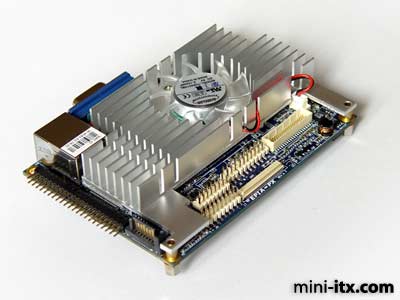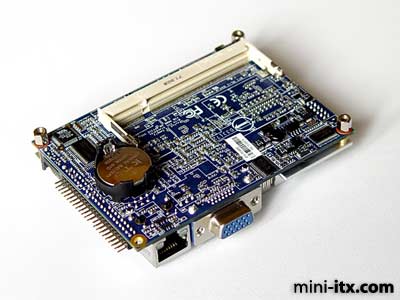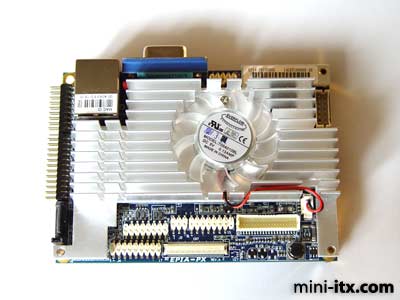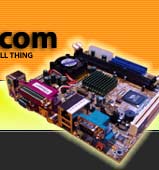|  | September 05, 2017
Choosing the right DC-DC PSU August 27, 2015
AMD's Project Quantum August 13, 2015
The Redstone PC is the ultimate Mini-ITX Minecraft Machine October 09, 2014
The "Restomod TV" April 09, 2013
Installing NAS4Free February 28, 2013
Building an XBMC 12 Home Theatre PC January 25, 2011
XBMC Guide updated to version 10.0 August 06, 2010
Building a Green PC February 15, 2010
Building an ION powered HTPC with XBMC October 10, 2008
The "Cambridge Autonomous Underwater Vehicle 2008" |
|  | | | September 12, 2008
"Florian", the DVD burning robot September 05, 2008
The "i-EPIA" May 22, 2008
The "GTA-PC" April 14, 2007
The "Digg" Case January 19, 2007
The "ITX-Laptop" December 07, 2006
The "Tortoise Beetle" October 02, 2006
The "DOS Head Unit" August 31, 2006
The "Janus Project" August 05, 2006
The "Leela PC" June 26, 2006
Nano-ITX in a Football May 17, 2006
The "EPIA Alloy Mod" April 11, 2006
Neatorama's Collection of Case Mods February 18, 2006
The "Rundfunker" October 24, 2005
The "ITX TV" October 06, 2005
The K'nex-ITX August 05, 2005
The "Waffle Iron PC" July 21, 2005
The "Supra-Server" July 18, 2005
The "Mega-ITX" July 07, 2005
The "Encyclomedia" May 25, 2005
The "Accordion ITX" |
|  | | | May 16, 2005
The "FileServerRouterSwitch" May 15, 2005
The "Mini Falcon" May 13, 2005
The "Bender PC" May 11, 2005
The "BBC ITX B" May 10, 2005
The "Frame" April 20, 2005
The "Jeannie" March 09, 2005
The "Cool Cube" January 30, 2005
First Nano-ITX Project? January 17, 2005
The "iGrill" January 15, 2005
The "Gumball PC" December 15, 2004
The "Deco Box" December 03, 2004
The "TERA-ITX" October 06, 2004
The "Coealacanth-PC" September 17, 2004
The "Gramaphone-ITX-HD" August 26, 2004
The "C1541 Disk Drive ITX" August 25, 2004
The "SEGA-ITX" August 13, 2004
The "Quiet Cubid" August 06, 2004
The "BMWPC" July 14, 2004
The "Moo Cow Moo" July 02, 2004
The "Mini Mesh Box" Full alphabetical archive on right hand side of page... |
|
|
VIA EPIA PX10000 Pico-ITX Review
External Overview

The majority of the board is taken up by an extruded Aluminimum heatsink with a cutout for a fan in the centre. This covers all the major components of the board, leaving just the board connectors free. The heatsink is pleasantly small, measuring just 15mm in height with a 2mm gap above the board itself.
On the rear of the board are the only two "real" ports - the VGA connector and 10/100 LAN connector. Nestling behind the VGA connector is the familiar red CMOS reset jumper. The 12-pin Pico-ITX power connector is just visible on the far left of the board. To the left of the VGA connector is the COM (Serial Port) connector.

Approaching from another angle we can see most of the pin connectors are in a row on the other side of the board. They are: USB 2.0 (4 ports); PS/2 Keyboard and Mouse; Front Panel connector (Power, Reset switches, Power, HDD LEDs, Speaker); DVI/LVDS; Audio and Multimedia connector. There's also a connector for the heatsink fan.
On the side is the black 44-pin 2.0mm pitch IDE connector (ATA 133/100) next to the S-ATA connector.
The board itself appears to be stackable, much like some of its PC/104 relatives. The heatsink extends fully to each three corners and has a 2mm hole running all the way through it, the motherboard and 5mm mounting nut below.

On the reverse of the board we find the DDR2 533 SODIMM connector and the CR2032 battery holder. There are a lot of surface mounted components. We couldn't help but think VIA missed a trick with the battery holder - it sticks out a full 10mm above the surface of the board. Could they have shaved off 2 or 3mm here?

The aerial shot again. All the connectors are visible.
The PX-O I/O board -->
*Advert* World's Smallest 12V DC-DC ATX
Power Supply now at the Mini-ITX store! *Advert*
The picoPSU is now available at the Mini-ITX.com Online Store. We serve the UK, Europe, USA and beyond. Order in-stock components before 7.00PM GMT and we'll ship same day! |
|
|
|







